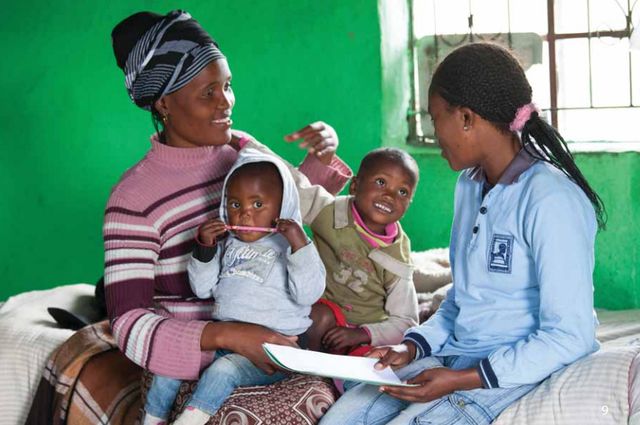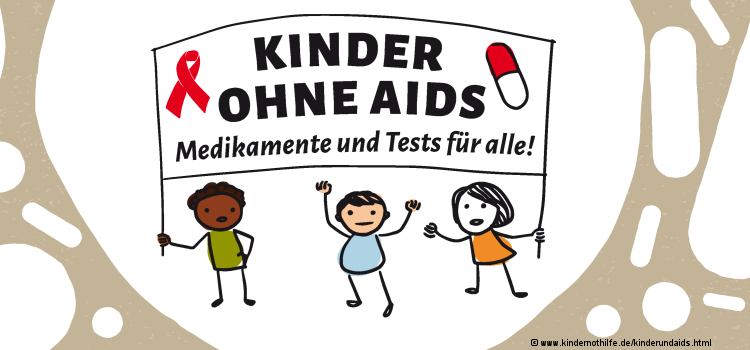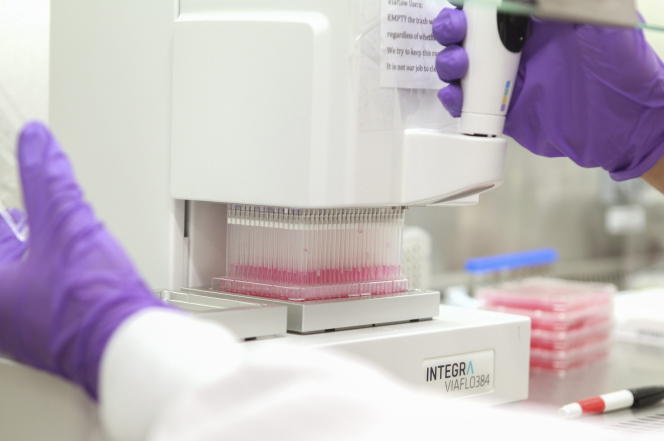(für den deutschen Text siehe bitte weiter unten!)
هرگز فکر نمی کردم که می توانستم به „اچ آی وی“ مبتلا شده باشم
سازمان امدادرسانی ایدز آلمان بر اساس تجربیات و تحقیقات بدست آمده می گوید: مرتب به تعداد زنان مبتلا به ایدز اضافه تر می شود. دلیل آن هم این است که بسیاری از زنان زمانی از ابتلای خود به عفونت ویروس اچ آی وی متوجه می شوند که سیستم ایمنی بدن آنها بطور پیشرفته ای خسارت دیده است. بطور مثال در پایین این مقاله آلمانی داستان ابتلای کریستینا زن آلمانی را می خوانیم که به ایدز مبتلا شده است. این زن در شرح ماجرای چگونگی ابتلایش به اچ آی وی توضیح می دهد که با یک بیماری پیشرفته ریوی که تنفس را بر او دشوار کرده بود و همچنین از سرفه های شدیدی رنج می برده است به پزشک مراجعه می کند. پزشک معالج او در وهله اول می پندارد که این نوع بیماری عفونی یک نوع سرطان ریوی می باشد و کریسینا را به بیمارستان می فرستد.
کریستینا خود می گوید در پی آزمایشاتی که متخصصین در بیمارستان از او به عمل می آورند متوجه می شوند که او به بیماری ذات الریه همراه با قارچ در شش هایش مبتلا شده است. پس از اینکه کریستینا آزمایش تست اچ آی وی می دهد, مشخص می شود که او در گذشته به اچ آی وی مبتلا شده بوده و خود نمی دانسته است. همچنین تعداد سلولهای کمکی بدن او از زمان ابتلای او به اچ آی وی تا بیماری ایدز بسیار تخریب شده بوده است. او در ادامه شرح ماجرای خود می افزاید که هرگز فکر نمی کرده است که مشکل بیماریهای او مربوط به اچ آی وی بوده باشد.
سازمان امداد رسانی ایدز در برلین در این باره می گوید که متاسفانه مرتب اشخاصی برای تست اچ آی وی و یا مشاوره, هنگامی به ما مراجعه می کنند که به بیماریهای پیشرفته اچ آی وی مبتلا شده اند, یعنی به ایدز بیمار هستند. سازمان کمک رسانی ایدز در برلین می افزاید که 80 درصد زنانی که به ابتلای اچ آی وی تشخیص داده می شوند به مرحله ایدز رسیده اند که این خود آمار بسیار بالا و وحشتناکی است.
بنابرین آنچه که از گزارش بالا نتیجه می گیریم, پیشنهاد من به هم میهنان گرامی چه در خارج از کشور و چه در داخل ایران این است: کسانی که در معرض رفتارهای پر خطر جنسی و یا اعتیاد و… قرار دارند با ترس ها و مشکلات درونی و تابو های اجتماعی خود مقابله کنند و خود را در معرض تست قرار دهند. همچنین مبتلایان به اچ آی وی که از ابتلای خود آگاه هستند, بیشتر اوقات در فاز اولیه ابتلای خود به علائم آن توجه کنند و برای پیشگیری از عواقب سخت ایدز خود را تحت درمان قرار دهند.
برگردان و نوشتار: کیومرث سراج الهی
 Immer mehr Frauen erkranken an Aids. Der Grund: Viele erfahren von ihrer HIV-Infektion erst, wenn die Immunschwäche schon weit fortgeschritten ist. Frauke Oppenberg hat „typische“ Fälle zusammengetragen.
Immer mehr Frauen erkranken an Aids. Der Grund: Viele erfahren von ihrer HIV-Infektion erst, wenn die Immunschwäche schon weit fortgeschritten ist. Frauke Oppenberg hat „typische“ Fälle zusammengetragen.
Erst war es ein hartnäckiger Husten, dann wachte Christina immer öfter nachts schweißgebadet auf. Sie schob es auf den Stress, den sie als Selbstständige in der Medienbranche hatte. Als sie sich immer schwächer fühlte und deutlich an Gewicht verlor, ging sie zu verschiedenen Ärzten, aber keiner konnte ihr helfen.
Erst als sie kaum noch Luft bekam, vermutete eine Lungenärztin ein Karzinom und schickte Christina in die Klinik. Nach acht Stunden in der Notaufnahme die Diagnose: Pneumocystis-Pneumonie. Verursacher dieser Lungenentzündung ist ein Pilz, der besonders häufig bei Menschen mit Immundefekt – zum Beispiel Aids-Kranken – auftritt. Christina wurde auf HIV getestet: Sie hatte nur noch drei Helferzellen.









